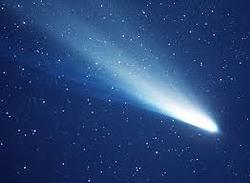A squareless sequence
 A new sequence is obtained from positive integers
1
,
2
,
3
…
by deleting all the perfect squares .Find the 2016th term of this sequence.
A new sequence is obtained from positive integers
1
,
2
,
3
…
by deleting all the perfect squares .Find the 2016th term of this sequence.
Bonus question : The answer to this problem resembles the occurrence of a celestial body. Find it and its significance.
The answer is 2061.
This section requires Javascript.
You are seeing this because something didn't load right. We suggest you, (a) try
refreshing the page, (b) enabling javascript if it is disabled on your browser and,
finally, (c)
loading the
non-javascript version of this page
. We're sorry about the hassle.
2 solutions
I like your solution better, but here's python code:
1 2 3 4 5 6 7 8 9 10 |
|
c o r r e c t !
I got 2060, but I forgot about 4 5 2 . My Bad, Anyways, what's about that celestial occurrence??
Log in to reply
Wait, Are you talking about Halley's Comet??
Log in to reply
Yeah , that's right! I have given the statement regarding it at the end of the solution.
LOL I done same in hard way
The number of perfect squares from 1 to 2 0 1 6 is 4 4 So the 2 0 1 6 th term is 2 0 1 6 + 4 4 + 1 ( since 2 0 2 5 is a perfect square. ) = 2 0 6 1
We see that
1 9 3 6 < 2 0 1 6 < 2 0 2 5 4 4 2 < 2 0 1 6 < 4 5 2
Since the 44 numbers which are perfect squares are deleted , we get 2 0 1 6 t h term as 2 0 1 6 + 4 4 = 2 0 6 0
But , in the meanwhile, 4 5 2 ( 2 0 2 5 ) also gets counted. So it must also be deleted. Hence finally 2 0 1 6 t h term is :
2 0 6 0 + 1 = 2 0 6 1
Answer to bonus question: This is the year when Halley's comet will be seen from earth. Ahh! I would be 6 1 years old then!